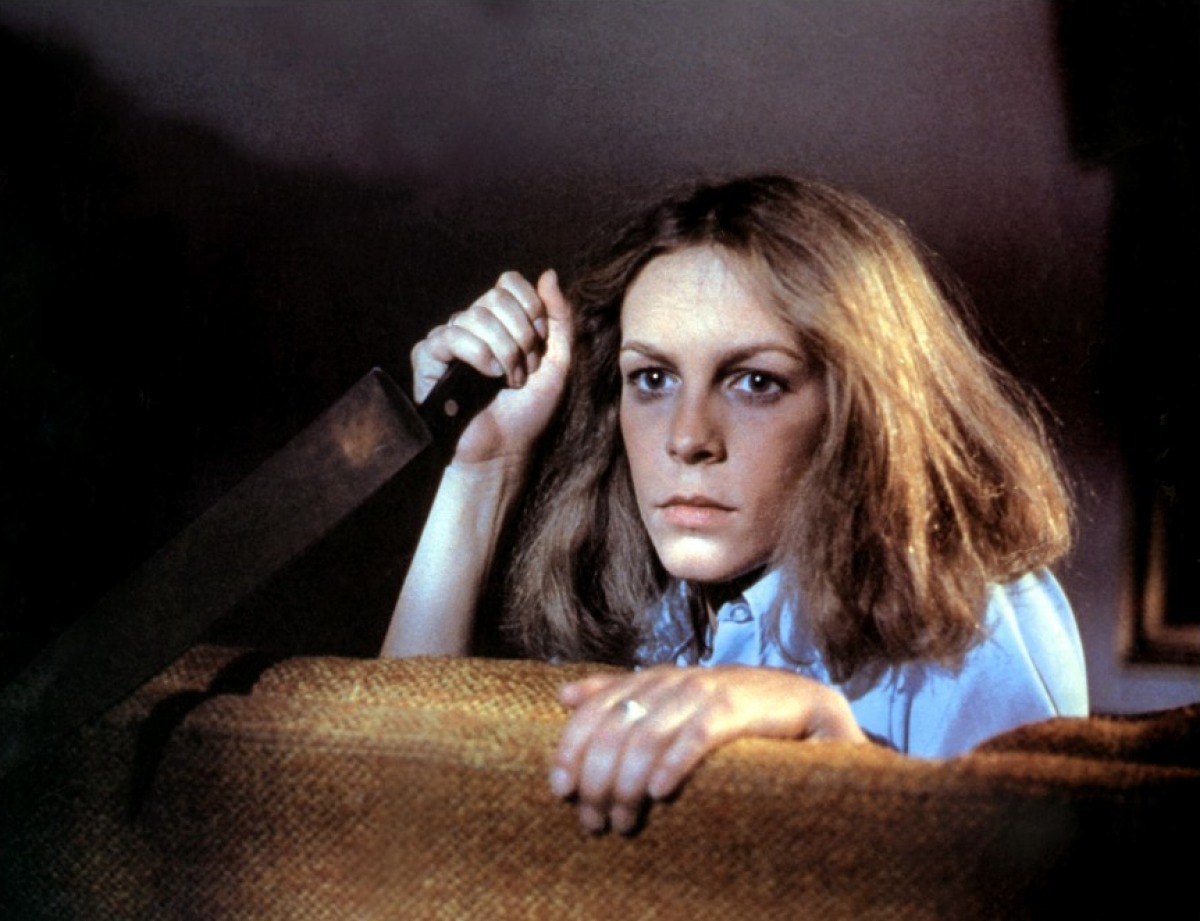It’s never easy being a hot young thing in a horror film — especially if you happen to be female. The genre has got itself a bit of a bad rep when it comes to feminism. It’s no secret that it loves to punish promiscuous girls in the most violent of ways, and more often than not the “slut” always dies. Since Marion got stabbed to death in the shower in Alfred Hitchcock’s Psycho, horror has been shaming sexually active girls on screen. Nowhere is this more obvious and brutal than in House of Wax, when beautiful blonde Paris Hilton gives her boyfriend a strip tease and a blow job and is then impaled through the head in the next scene. But there are exceptions. There are those so brilliantly badass they manage to escape the genre’s gender conventions. This is an ode to the girls who have single-handedly said ‘fuck you’ to teen horror’s favorite cliché.
Let’s start by flashing back to 1978, when a young Jamie Lee Curtis first gained her scream queen status as Laurie in John Carpenter’s American slasher, Halloween. Despite being pursued by the psychotic killer Mike Myers, she survives, earning herself the Final Girl status – a horror trope theorized by Carol J. Clover in her seminal text Men, Women and Chain Saw: Gender in the Modern Horror Film. The Final Girl avoids vices such as sex and substance abuse, occasionally has a gender-neutral name and often has a shared history with the killer (SPOILER: in Halloween, Laurie discovers that Mike is her older brother). In this example, our Final Girl Laurie becomes masculinized by using weaponry, which therefore allows the male spectator to identify with the Final Girl whilst she simultaneously fends off the male gaze.
Halloween notably showcases two of the most famous tropes used to categorize women within horror. While the film can be applauded for rebelling against genre norms by featuring a female lead, it still negatively portrays female sexuality. Unlike the virtuous Laurie, her female counterparts are seen engaging in sex and are killed off. Laurie is rewarded for her virginal behavior, and the slashing of the “sluts” cements the idea that female sexuality really can be fatal.
Arguably the fairest female survivor of them all is Sidney Prescott from Wes Craven’s Scream franchise. The teen slasher revitalized horror in the 90s and cleverly called out all the clichés. “You’re not a virgin. Now you’ve got to die. Those are the rules,” says Stu to Sidney in the 1996 film (the first of the franchise). Not only did she fight her way through all four films — slaying each killer along the way — but she corrupts the theory that when girls have sex on screen, it results in death. Yes she’s pretty and popular, but she avoids being sexualized — not a low cut top or short skirt in sight. And she even has sex with her boyfriend (SPOILER: who ended up being the face behind the infamous mask) and then shoots him in the head. That’s a blatant middle finger to horror film’s history of “slut” slaying.
Returning for three more films, Sidney gets stronger in each sequel and despite being continuously sought out by numerous ghostface killers, she goes from teen dream to running her own telephone hotline for troubled women. Wes Craven created the ultimate pin-up girl of horror.
Then there’s Hayley Start in Hard Candy. Ellen Page plays the 14-year-old school girl who meets photographer/sexual predator Jeff online. After a series of red hot messages, they meet for coffee, where our female protagonist continuously drops her pubescent age into conversation and is still invited back with Jeff. Completely contradicting the slasher stereotype where females are exploited on screen, it’s our not-so-sweet female protagonist who does the exploiting. (SPOILER: She goes on to torture, castrate and hang the sexual predator, after he confesses to previously molesting and murdering another teenage girl). “Who the hell are you?” Jeff asks Hayley. “I’m every little girl you ever watched, touched, hurt, screwed, killed.”
Hayley stands up for sisterhood, and after Jeff accuses her of coming on to him, she treats him to some very wise words from a girl still coming-of-age: “That’s what they all say Jeff…The pedophiles…’Oh, she was so sexy. She was asking for it.’ ‘She was only technically a girl, she acted like a woman.’ It’s just so easy to blame a kid, isn’t it! Just because a girl knows how to imitate a woman, does NOT mean she’s ready to do what a woman does.” Had Hayley not been such a tough cookie, she too would have been sexualized and victimized.
Most recently, last year’s It Follows utterly defies the “slut”-always-dies-in-slashers theory. Maika Monroe plays ultra-feminine Jay Height, who has sex at the start of the film, but in this instance our “slut” survives to tell the story. In this modern horror, Jay is haunted by a supernatural infection that she can only get rid of if she passes it on through sex – -just think of it as a phantom STD. The film is a beacon of light amongst the weak and repetitive horror franchises of recent years. David Robert Mitchell’s filmis truly unique and progressive, and suggests that our sexually frustrated society is finally becoming more open to female sexuality, highlighted as our horror heroine rides out her curse.
Although this trip down memory lane has pointed out examples that go against the grain, these characters obviously can’t be crowned as diverse. Like the vast percentage of females on the silver screen, they are all heterosexual and white. But let’s salute these dream girls of horror as a token of trash-tastic popular culture, all of which can be celebrated in all their gory glory for subverting a genre known for portraying female victimhood. IRL sex doesn’t equal death, and being female doesn’t make you a victim, nor should this horror stereotype be slashed across our screens.
Credits
Text Billie Brand
